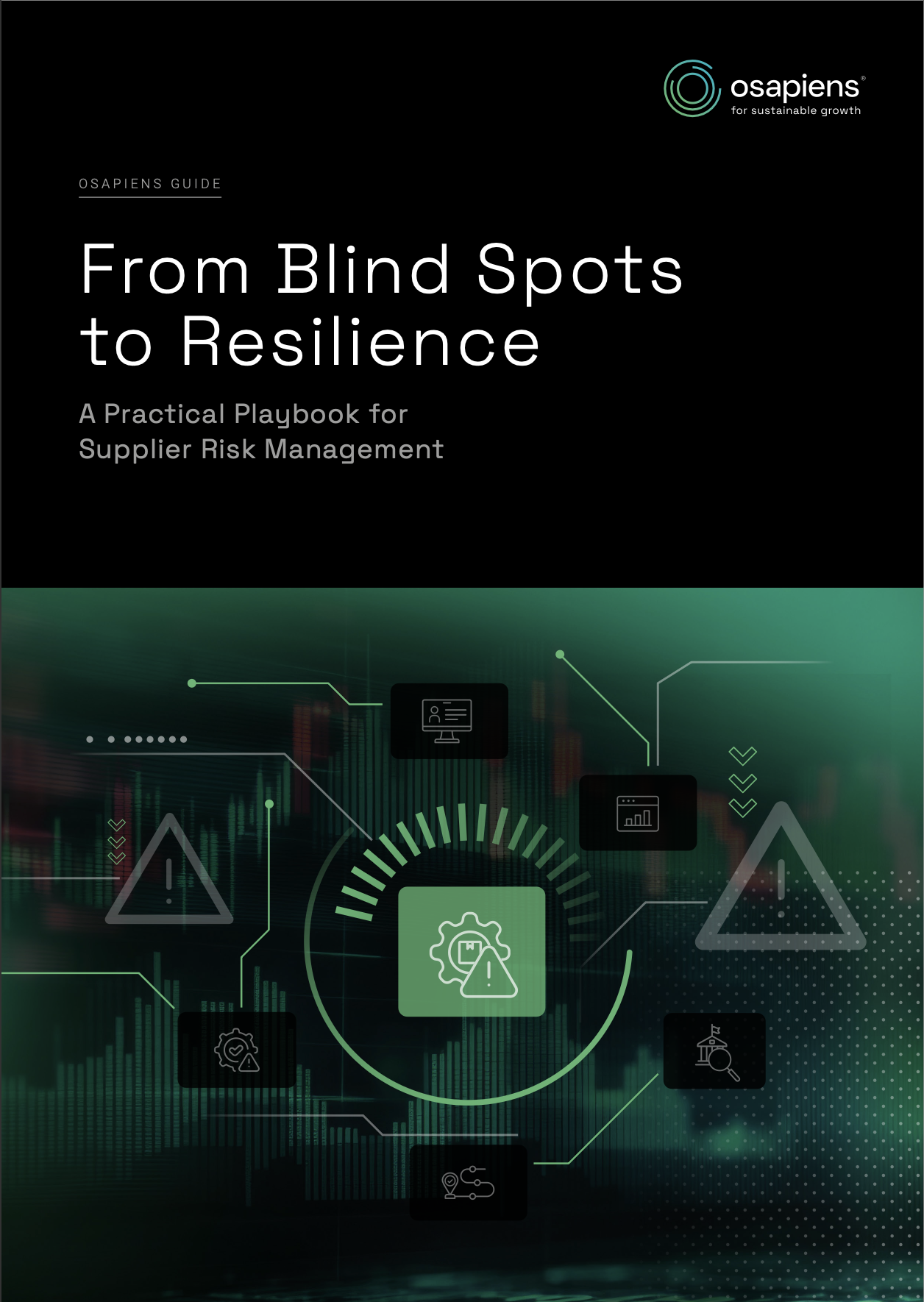Community
osapeers.org

The Supplier Risk Management Guide explores how organizations can move from fragmented, reactive risk handling to a continuous, data-driven approach that strengthens resilience and compliance.
It offers a practical roadmap to identify, assess, and mitigate supplier risks across all tiers of the supply chain, helping companies build transparency, meet rising regulatory expectations, and turn risk management into a strategic advantage.
The guide combines market data, best practices, and actionable steps to help procurement, compliance, and sustainability leaders transform how supplier risk is managed. It shows how companies can connect data, automate monitoring, and collaborate more effectively with suppliers to stay ahead in an increasingly complex risk landscape.
What Supplier Risk Management Means – and Why It Matters
Supply chains today operate under unprecedented volatility. From geopolitical risks and cyber threats to regulatory compliance and due diligence obligations like EUDR, CSDDD and NIS2, risks now extend far beyond direct suppliers. Traditional methods like manual spreadsheets, annual questionnaires, or one-off audits can no longer keep pace.
Supplier Risk Mgmt. is the discipline of continuously identifying, assessing, and mitigating supplier-related risks across all tiers. It combines regulatory compliance, operational resilience, and data transparency on one connected platform. By integrating internal supplier data with external risk signals, organizations gain a real-time view of supplier health, reduce disruptions, and build lasting trust with stakeholders.